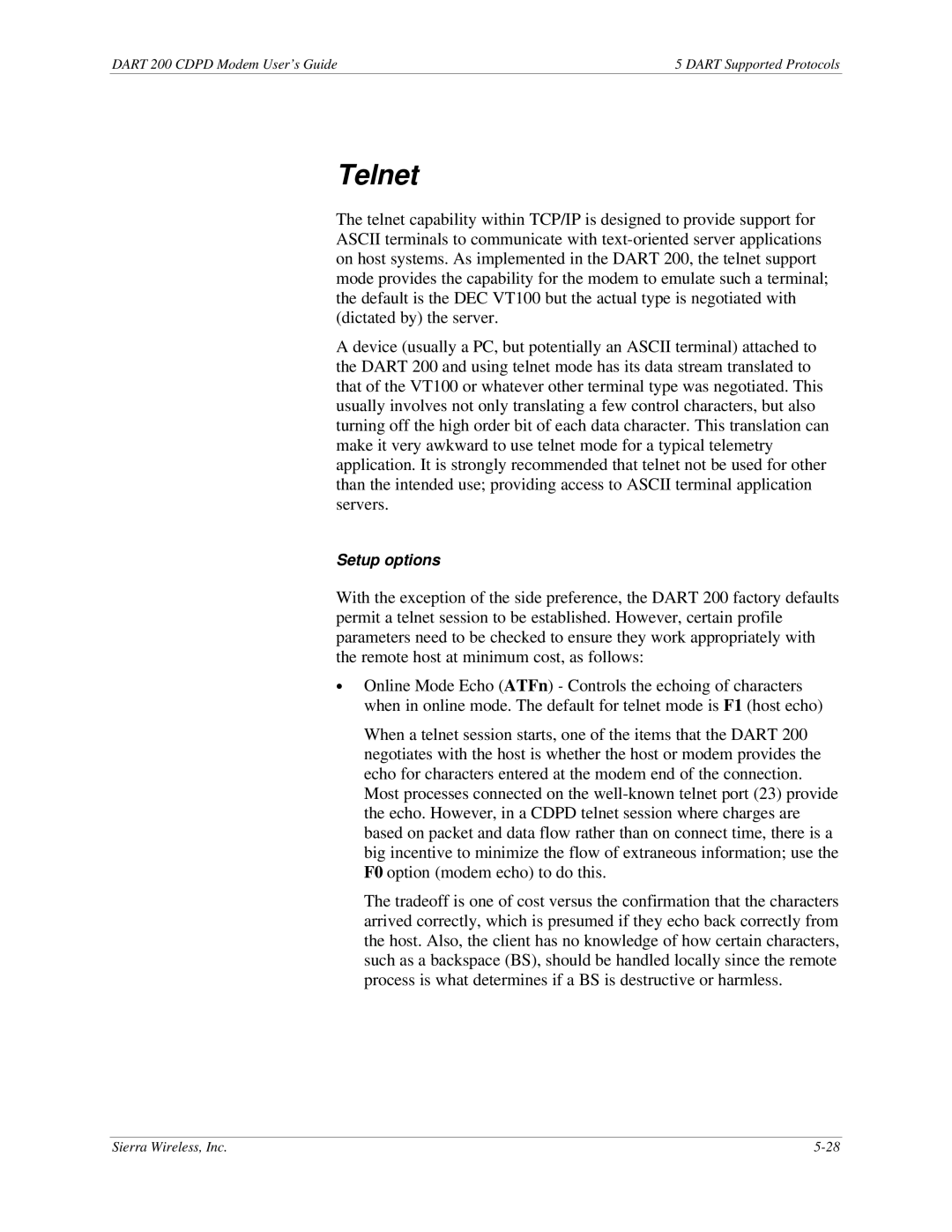DART 200 CDPD Modem User’s Guide | 5 DART Supported Protocols |
Telnet
The telnet capability within TCP/IP is designed to provide support for ASCII terminals to communicate with
A device (usually a PC, but potentially an ASCII terminal) attached to the DART 200 and using telnet mode has its data stream translated to that of the VT100 or whatever other terminal type was negotiated. This usually involves not only translating a few control characters, but also turning off the high order bit of each data character. This translation can make it very awkward to use telnet mode for a typical telemetry application. It is strongly recommended that telnet not be used for other than the intended use; providing access to ASCII terminal application servers.
Setup options
With the exception of the side preference, the DART 200 factory defaults permit a telnet session to be established. However, certain profile parameters need to be checked to ensure they work appropriately with the remote host at minimum cost, as follows:
∙Online Mode Echo (ATFn) - Controls the echoing of characters when in online mode. The default for telnet mode is F1 (host echo)
When a telnet session starts, one of the items that the DART 200 negotiates with the host is whether the host or modem provides the echo for characters entered at the modem end of the connection. Most processes connected on the
The tradeoff is one of cost versus the confirmation that the characters arrived correctly, which is presumed if they echo back correctly from the host. Also, the client has no knowledge of how certain characters, such as a backspace (BS), should be handled locally since the remote process is what determines if a BS is destructive or harmless.
Sierra Wireless, Inc. |
